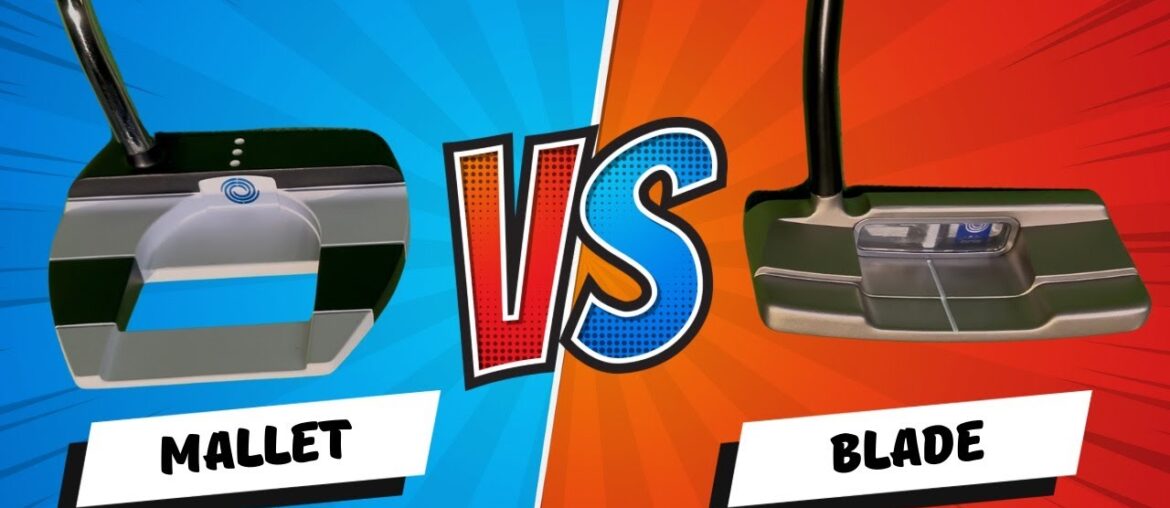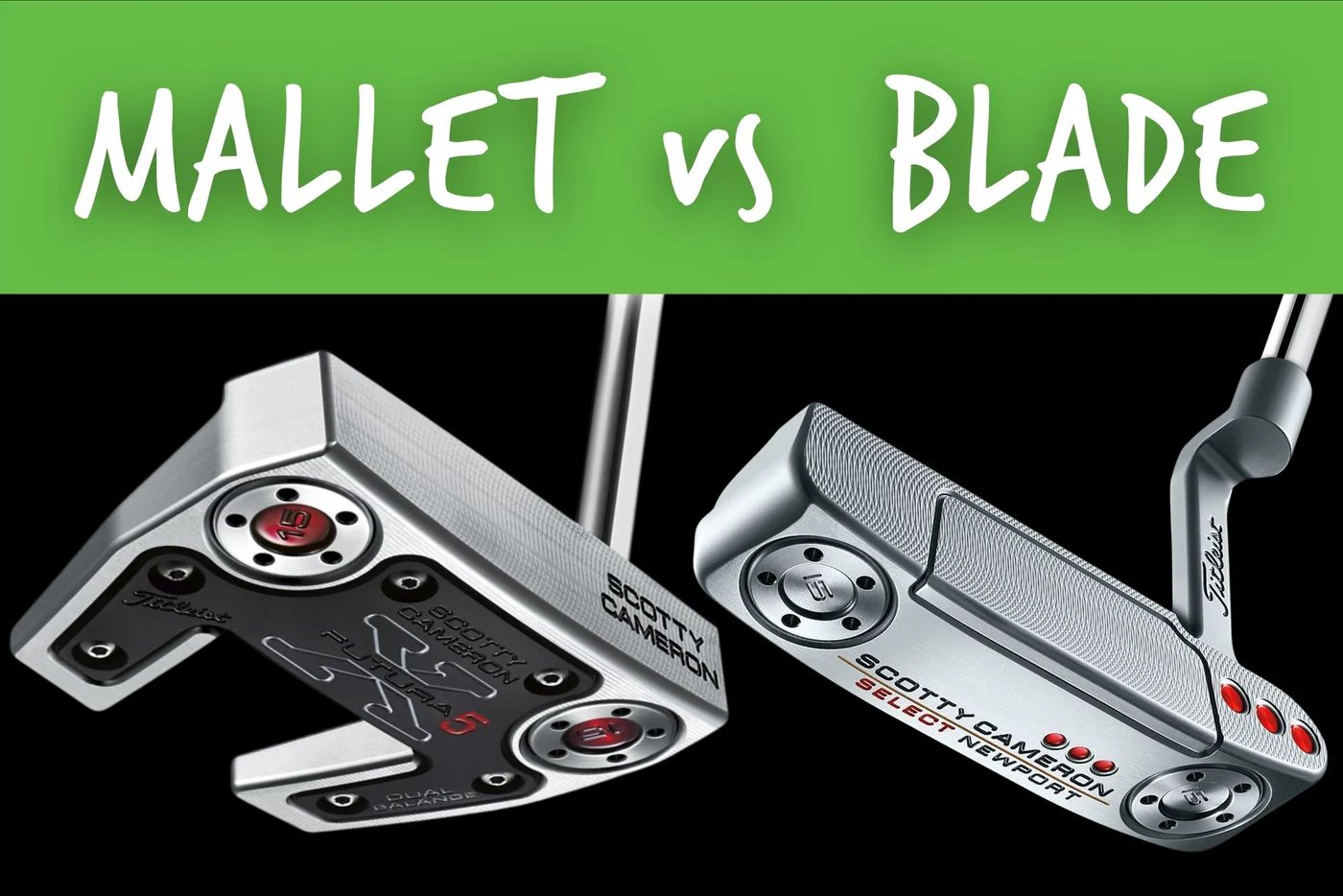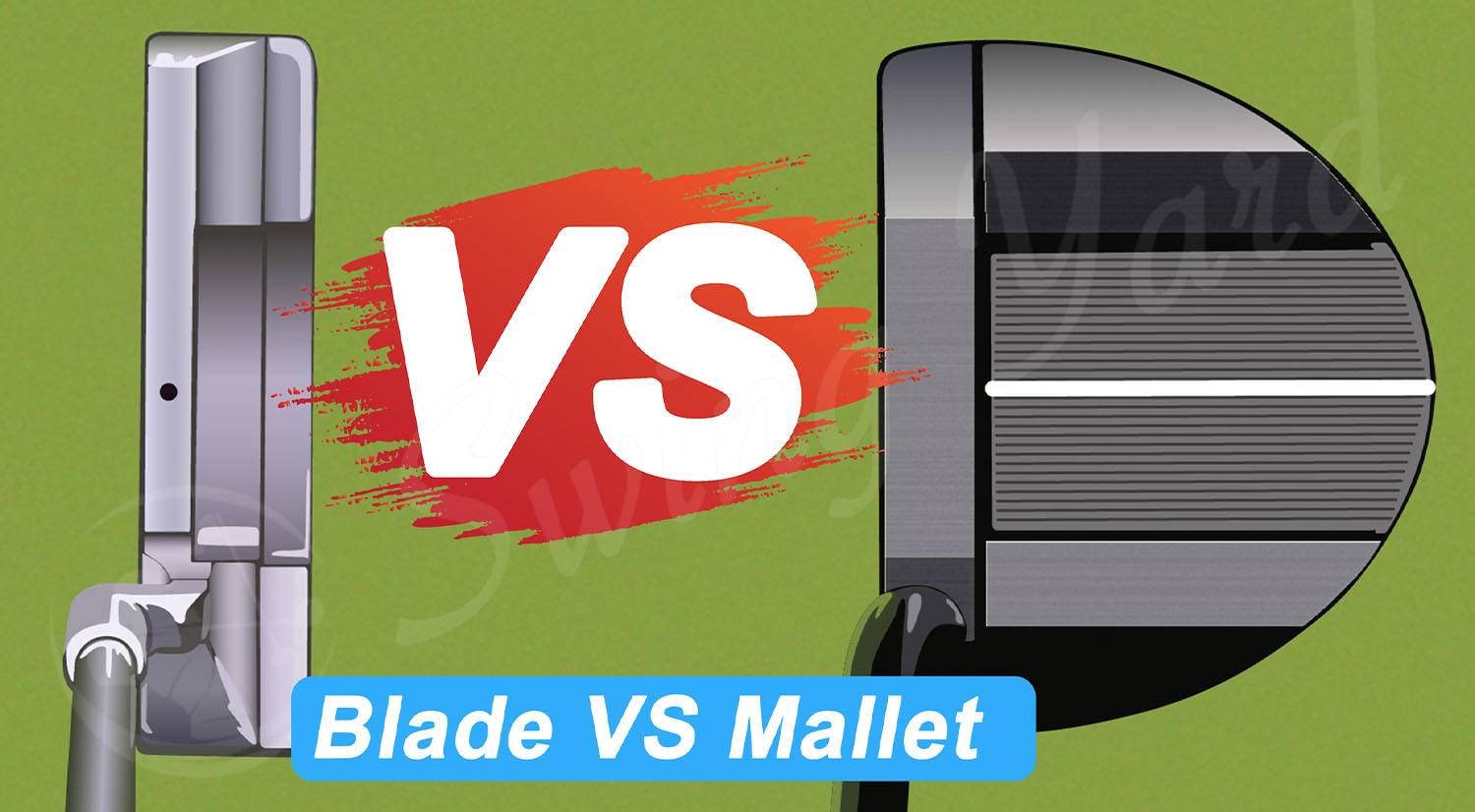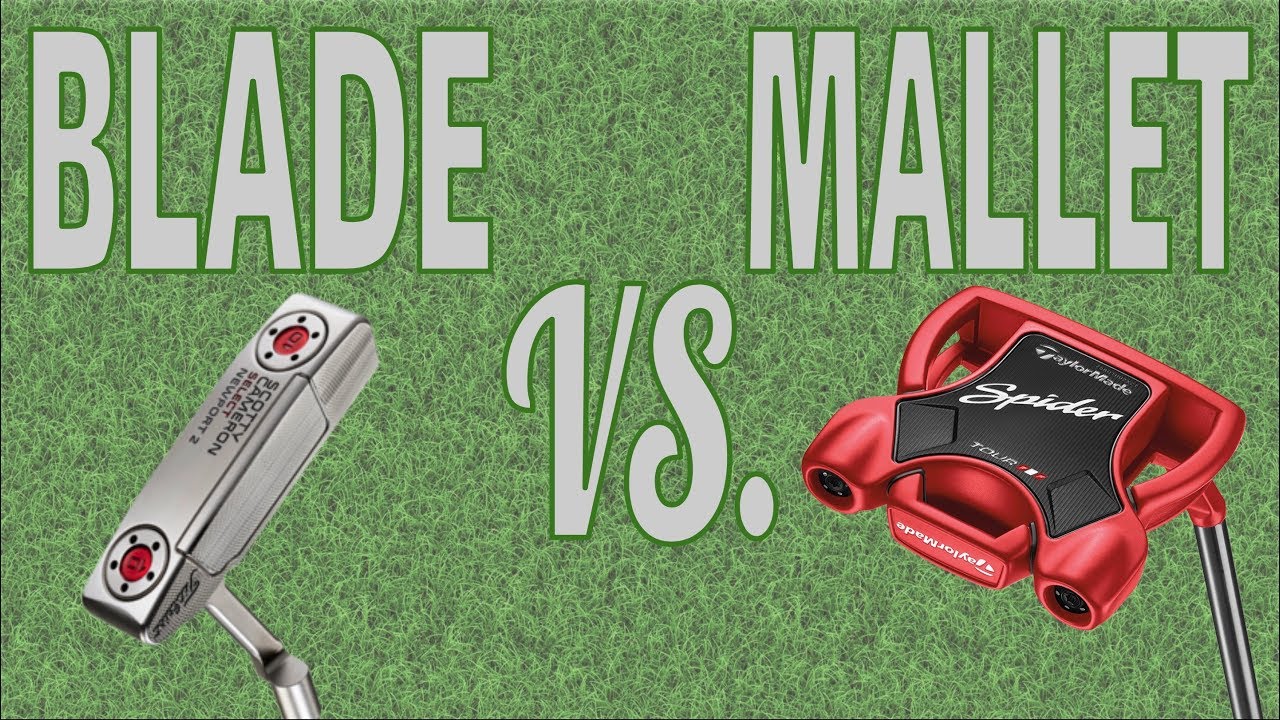|
Getting your Trinity Audio player ready...
|
If you’ve ever stood in a pro shop staring at rows of shiny putters, you’ve probably asked yourself: Should I go with a mallet or a blade? This debate has been around for decades, and the truth is, each design has unique strengths. The key is matching the right putter to your stroke, skill level, and personal feel.
In this guide, we’ll break down the differences between mallet and blade putters, their pros and cons, and help you decide which one belongs in your bag.
What Is a Mallet Putter?
Mallet putters are known for their larger, rounded, or square-shaped heads. They often feature advanced alignment aids and distribute weight around the perimeter of the clubhead.
Benefits of Mallet Putters
- Forgiveness – The bigger head and higher MOI (moment of inertia) make off-center hits more stable.
- Alignment help – Many mallets feature sightlines or visual cues, making it easier to square the face.
- Best for straight strokes – Mallets suit golfers who putt with a straight-back-straight-through stroke.
Example: Think of models like the Odyssey 2-Ball or TaylorMade Spider, easy to align and forgiving under pressure.
What Is a Blade Putter?
Blade putters are the traditional, slim-profiled flat sticks you’ve seen in the hands of legends like Tiger Woods.
Benefits of Blade Putters
- Classic feel and control – Preferred by purists for their simplicity.
- Precision – Ideal for golfers who rely on touch and finesse on fast greens.
- Best for arc strokes – Perfect for players with a natural inside-to-square-to-inside putting stroke.
Example: The Scotty Cameron Newport, sleek, balanced, and built for feel.
Mallet vs Blade Putter – Key Differences
| Feature | Mallet Putter | Blade Putter |
| Head Shape | Large, rounded/square | Thin, traditional |
| Forgiveness | Very forgiving | Less forgiving |
| Alignment | Easy, with visual aids | Minimal alignment help |
| Stroke Type | Straight back & through | Arc stroke |
| Weight Distribution | Perimeter weighted | Toe-weighted |
| Feel | More mechanical | More responsive |
Which Putter Is Right for You?
Beginners / High Handicappers
A mallet putter is usually the better choice. The forgiveness and alignment features help reduce three-putts and build confidence.
Experienced Golfers / Low Handicappers
Many prefer a blade putter for the feedback and control it offers. If you’ve got a smooth arc stroke, the blade rewards precision.
Personal Preference Matters
At the end of the day, putting is about confidence. Some golfers feel more comfortable looking down at a mallet, while others swear by the clean, classic look of a blade. Try both on the practice green before committing.
FAQs
Is a mallet putter better for beginners?
Yes, most beginners benefit from the forgiveness and easy alignment of mallet putters.
Do pros use mallet or blade putters?
Both. While traditionalists like Tiger Woods still use blades, many modern pros (like Dustin Johnson) rely on mallets.
Can I switch between mallet and blade putters?
Absolutely. Some golfers even rotate depending on the course conditions or their putting form.
Conclusion
So, mallet vs blade putter, which wins? There’s no universal answer. Mallets shine for forgiveness and alignment, while blades excel at feel and precision. The best choice is the one that matches your stroke and gives you confidence over the ball.
👉 My advice? Test both styles, trust your feel, and pick the putter that helps you roll the rock with confidence.








